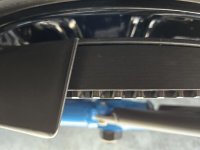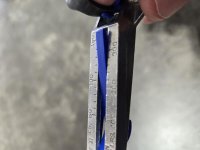Yes, I figured it wouldn't be able to come off the flared end. I just wouldn't call it fixed
In my brain that would be welded or machined to prevent this. Solid basically, but I understand what your saying.
First off, you made a wise decision to obtain qualified help rather than pursue a frustrating continuing situation.
Second, a lack of correct terminology and understanding of the rear axle's construction was a portion of the stumbling during the process. What you expected the axle to be, is not how the axle is manufactured. For ease of manufacturing, and lower costs, the axle is manufactured from two items, which then become secured together.
The axle shaft is made from a tube, both ends threaded. At axle manufacture, a nut is threaded on one end and permanently swaged to prevent removal of the nut under normal use. Yes, as you mentioned rather than swaging, that nut could have been welded. However, the axle needs to remain straight, and heat could distort the straightness, or alter any heat treat properties of the steel.
One reason I backed off from offering additional information was when the original person that posted, indicated on their Spyder the true axle nut was on the left, and the axle required being removed towards the right. This statement deviated from how the manuals and all Spyders I have worked on were assembled.
Regardless, again, as has been demonstrated, always best when a person realizes and understands the limits of their abilities and employs qualified help.
Ideally the original person that posted has no longer got belt vibrations, along with a correctly aligned belt.


